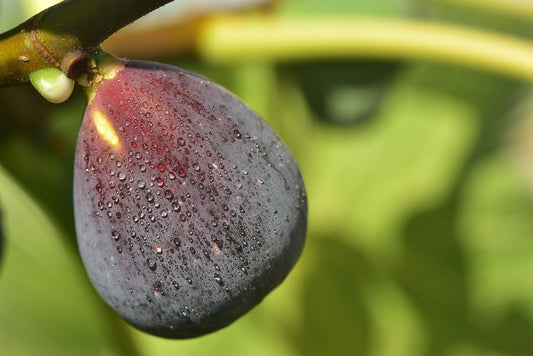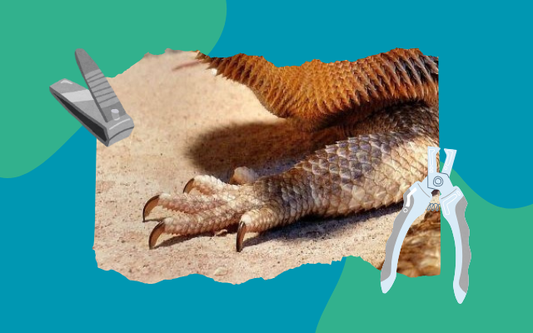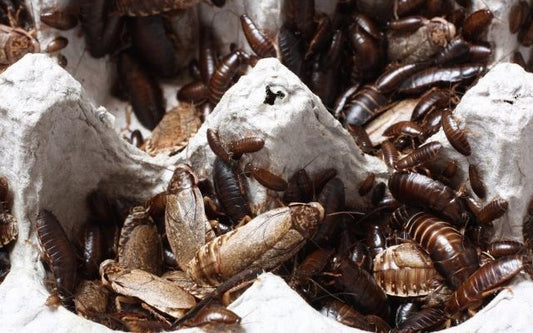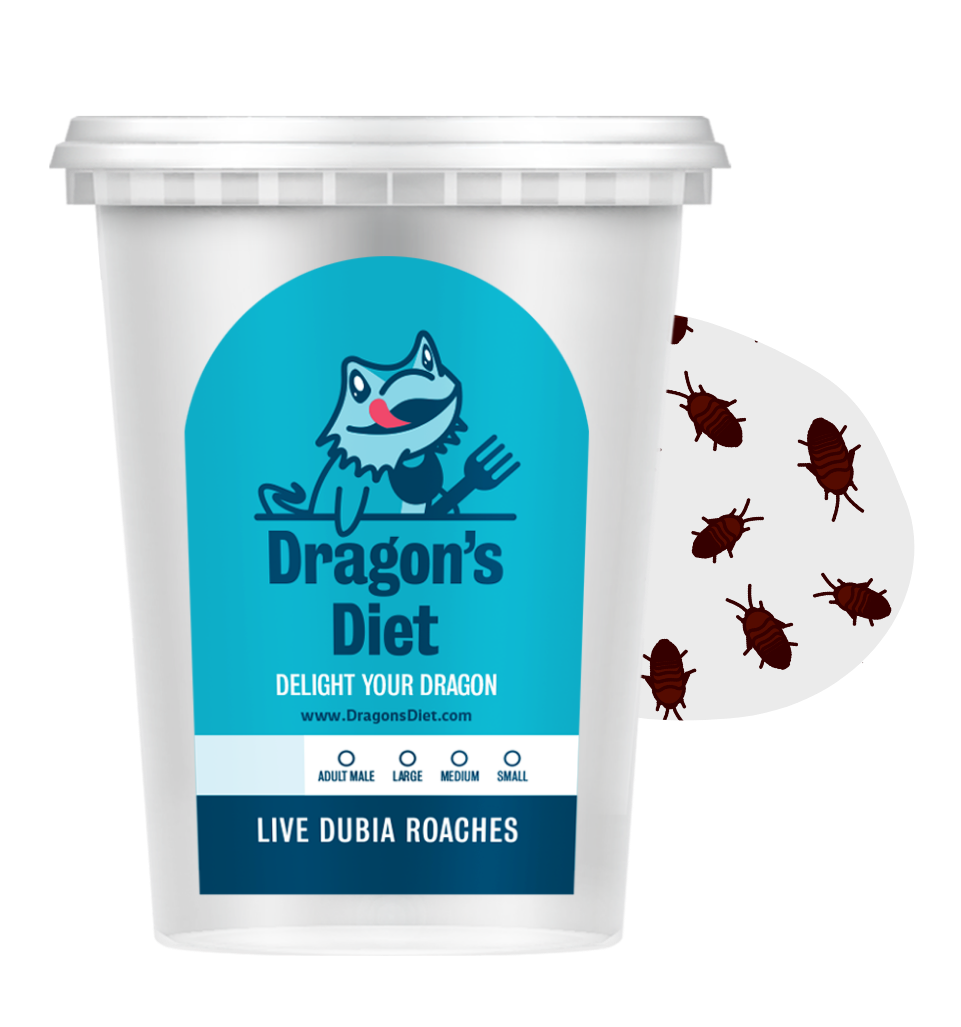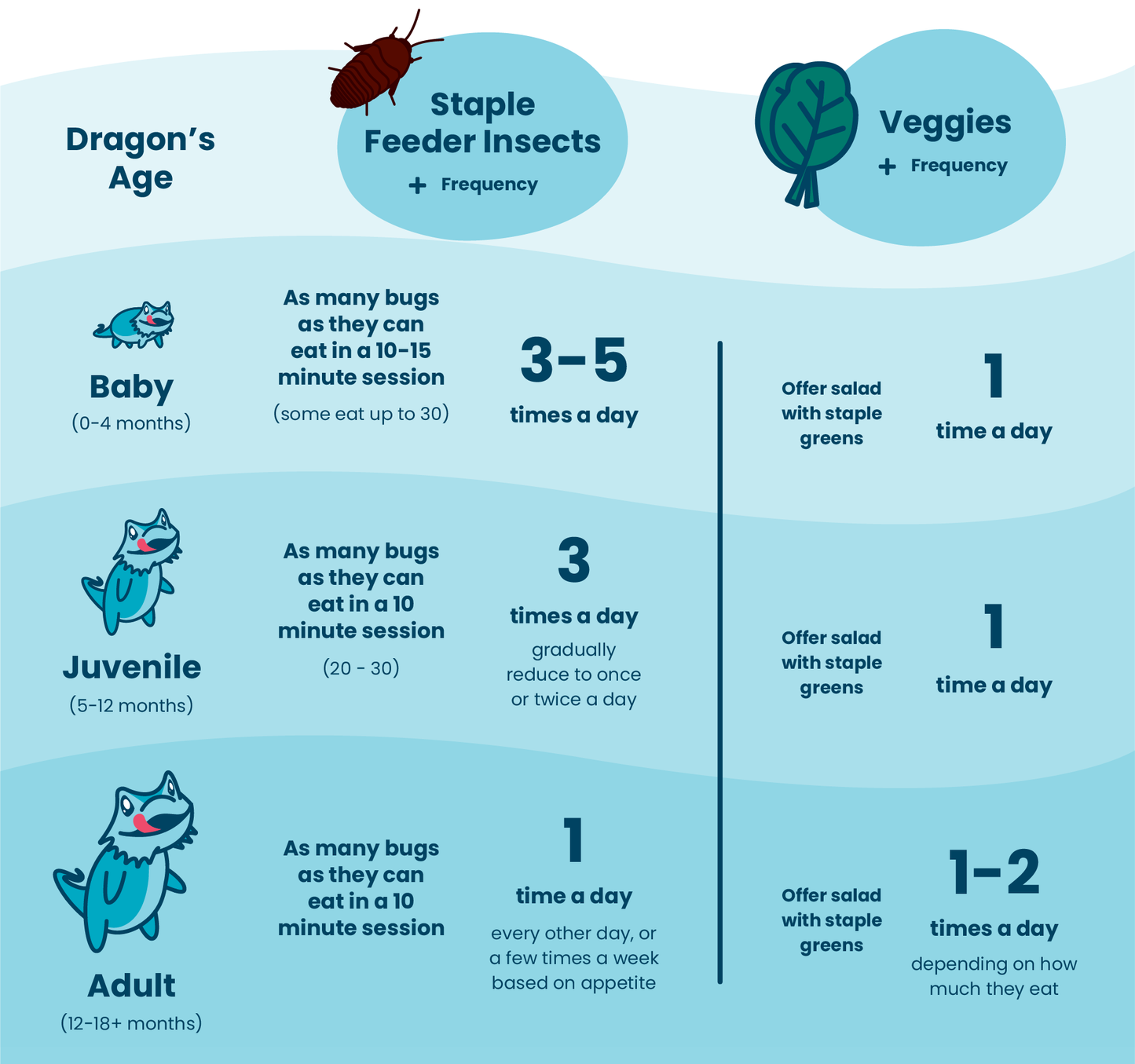Understanding bearded dragon behavior is key to keeping your pet happy and healthy. However, since bearded dragons are exotic creatures, figuring out what they need is not always intuitive.
If you’ve got a bearded dragon or you're planning to get one, it’s important to have an understanding of various bearded dragon behaviors you may see so you can understand what your dragon is trying to tell you and know when it’s time to call your vet.
Here are fifteen common behaviors among pet bearded dragons, sorted into categories: potential illness, cute behaviors, and aggressive behaviors.
Disclaimer: This article does not aim to take the place of a veterinarian. It was written to provide helpful information on common bearded dragon behaviors with the intent of educating bearded dragon owners and prompting them to call a qualified veterinarian when necessary.
6 Bearded Dragon Behaviors that Can Signify Illness
1. LETHARGY
We’ll start with a very common issue: lethargy. Has your bearded dragon been acting tired for more than a few days? Sleeping longer, walking with less energy (not to be confused with actually having trouble moving), or refusing to chase prey as usual? There are many possible reasons for this. Some are completely normal, and some signify a bigger concern:
- Brumation. If lethargy is accompanied by hiding under things in the tank or trying to burrow, it’s likely your dragon is preparing for brumation, a sleep-like state that wild bearded dragons undergo to protect themselves when the weather is cold. This is a normal process and nothing to worry about unless your dragon is a baby or is ill, in which case you’ll want to consult with your vet to see if is it safe to let brumation continue.
- Lack of heat. If your tank is too cold, your dragon may act fatigued. Beneath the basking spot, aim for a temperature of 95 to 110 degrees Fahrenheit; the rest of the cage should be around 70 degrees. At night, the entire tank should be around 65. It's helpful to keep a small thermometer at either end of the terrarium along with a thermometer gun to keep track of this.
- Poor lighting. Bearded dragons need exposure to UV rays that mimic the desert sun in their natural habitat. It helps them properly digest and absorb food and nutrients. And without it, they may act lethargic and become sick. Make sure your basking bulb is on 12 hours a day and is about 12 inches above the basking spot. It’s a good idea to change the bulb every six months to ensure optimal performance.
- Parasites. If your dragon is acting lethargic and has foul-smelling runny poo, he may have parasites. Definitely contact your vet if you suspect this.
- Poor diet. If bearded dragons are not given a healthy, balanced diet, they may act lethargic. It may be worth taking a look at what your dragon has been eating to determine if she is getting a full range of nutrients.

2. DIARRHEA
Occasional diarrhea is not usually a cause for concern, but if you notice that it’s happening more consistently, over a span of a few days or more, you should give your vet a call. Several factors could be to blame for your dragon’s runny stools:
- Diet. Your dragon might have eaten rotten food or had too many berries or water-heavy foods like lettuce, cucumbers, or watermelon. In this case, the diarrhea should not last more than a day or two.
- Stress. Bearded dragons can experience diarrhea if they are stressed. Perhaps you just got a new dog or another dragon, moved to a new home, introduced a source of noise such as a new TV, put your dragon into a new terrarium, or recently added a new piece of decor to their tank that may be scaring them. Think about what may be stressing your dragon out and what you can do to help him feel more calm and secure.
- Parasites. If you are unable to pinpoint the cause of persistent diarrhea, it could be parasites. Definitely set up an appointment with your vet if you suspect this since they will only get worse without treatment.
A note about diarrhea: it can cause dehydration especially when it is prolonged. Signs of dehydration include:
- Lethargy and loss of appetite
- Wrinkly, dry-looking skin
- Sunken eyes
Pro Tip: To test for dehydration, gently pinch and pull the skin on the back of your dragon and see how quickly it releases when you let go. If it quickly bounces back, then your dragon is not dehydrated; if it slowly returns to its shape, then your dragon probably needs more water.
3. PANTING
If your dragon starts reminding you of a dog in this way, any of the following could be to blame:
- The tank is too hot. Your dragon might be panting because she is overheated. Dragons are cold-blooded, so if the temperatures in their environment are not ideal, they can quickly become too hot or too cold.
- In your dragon’s terrarium, make sure the basking area is between 95 and 110 degrees Farhenheit during the day with cooler areas of the tank to allow body temperature regulation.
- At night, the entire tank should be kept between 65 and 75 degrees Fahrenheit.
- Mouth infection. Your dragon may have mouth rot, which can cause him to leave his mouth hanging open and look as though he is panting. This is a serious illness that will need to be treated by a vet as soon as possible. Mouth rot occurs when the dragon’s immune system is weakened by stress, inadequate heating and lighting, poor diet, or a combination of all three; and the tissues of the mouth become inflamed to the point of rotting. If you notice the skin of your dragon’s mouth is yellow or gray, his gums look red and inflamed, and he is refusing to eat, get in touch with your veterinarian as soon as possible. This disease can spread to the lungs if left untreated.
- Respiratory problem. Respiratory diseases such as pneumonia can cause your dragon to pant. You should contact a vet immediately if you suspect a respiratory issue. Other symptoms include sneezing, refusing to eat, breathing quickly or taking shallow breaths, and acting tired along with fluid leaking from the eyes and nose.
4. STUNTED MOVEMENTS OR DIFFICULTY WALKING
If your bearded dragon is having trouble walking, the cause is usually a severe problem and you should get in touch with your vet immediately. The following conditions can be to blame:
- Metabolic bone disease (MBD). MBD occurs when a dragon’s body either does not receive enough calcium or is unable to absorb calcium due to an excess of phosphorus or lack of Vitamin D3. MBD causes the dragon’s bones, tissues, and muscles to deteriorate, which can cause deformity, paralysis, fractures, tissue loss, and even death in severe cases.
- Severe gut impaction. Gut impaction occurs when indigestible or large objects become stuck in a dragon’s stomach or digestive tract. This can include pieces of substrate or insects that were bigger than the space between the dragon’s eyes. If it’s severe enough, gut impaction can cause trouble walking or paralysis of the back legs. Your dragon may need an x-ray to figure out exactly how bad the impaction is.
- Broken bone or fracture. Your dragon may have hurt herself and is having trouble walking as a result. This may be the case if you notice her struggling with one limb and overcompensating with the other three.
- Vision problem or ear infection. Both of these issues can cause your dragon to feel disoriented and struggle to walk normally. If you notice that your dragon’s limbs are healthy but she is crashing into things or walking with jerky, uneven movements, the cause could be deteriorating eyesight, an inner ear infection, or a vision problem.
- Head or spine injury or neurological problem. There is a chance that your dragon’s odd or stunted walking is caused by a trauma or illness affecting the brain or nervous system. This is definitely a situation where you would need a vet to treat your dragon.
- Overheating. If your dragon is too hot, he may become dizzy, lose his balance, and stumble around. Because bearded dragons are cold-blooded, it can be quite dangerous if your dragon remains overheated for extended periods of time. In fact, in severe cases, overheating can kill them.
- Gout. Did you know bearded dragons can get gout? It happens when the dragon’s kidneys are unable to filter uric acid (waste) from the blood, so it stays in the body. Kidney issues can be caused by prolonged dehydration, high protein consumption, or aging. The uric acid buildup will crystalize onto your dragon’s organs, which can press against the spinal cord and inhibit walking.
5. VOMITING
In many cases, vomiting is a sign of something more serious. Unless you can definitely attribute it to isolated cases of overeating or drinking too much, call your vet as soon as possible. Here are some of the causes of vomiting:
- Overeating. Sometimes your dragon may eat a little too much. Baby dragons, especially, tend to get over eager during feedings. If you know your dragon ate too much and is now vomiting, there is usually no cause for concern. You may want to shorten feeding time or offer less food to your dragon to help prevent this in the future.
- Overhydrating. If your dragon drinks too much water or moves around too much after drinking, he may vomit. If this is a common issue with your dragon, you can offer less water in his feeding dish or shorten bathtime if your dragon is consistently drinking too much in the bath.
- Gut impaction. A more alarming cause of vomit can be the size of your dragon’s feeder insects. Dragons should not eat insects that are bigger than the space between their eyes. This can cause gut impaction which can become more serious over time.
- Parasites. This is not an uncommon issue among bearded dragons, but it can cause a lot of health issues if it goes untreated. If your dragon has prolonged diarrhea and is acting lethargic as well as throwing up, parasites could be the cause. Call your vet if you suspect this.
- High humidity. As native creatures of the Australian deserts, bearded dragons thrive in hot, dry climates. As a general rule of thumb, the humidity in your dragon’s terrarium should be 30 to 40%. Humidity over 50% can cause respiratory illness, harm your dragon’s immune system, and cause bacteria and mold to grow. If your hygrometer shows high humidity levels in the tank, make sure the water dish is not in the basking spot and introduce more ventilation. Using a screen lid can help with this.
6. EYE BULGING
It can be disconcerting to notice your dragon’s eyes bulging (swollen and protruding from the head, usually accompanied by squinting). The following are common causes:
- Shedding. Bearded dragons are very uncomfortable when they shed. Sometimes to help remove the skin around their face, they will bulge their eyes out in an attempt to get it off. This isn’t cause for concern. The best thing to do for your dragon while she is shedding is to provide warm baths. Don’t ever peel her skin off, just let it fall when it’s ready.
- Vitamin A overdose. If your dragon has Vitamin A toxicity, you may notice bulging eyes. It’s very unlikely that a dragon would develop Vitamin A toxicity from diet alone; more likely it is caused by an overdose of supplements rich in Vitamin A. Supplements with beta carotene instead of Vitamin A are typically better for your dragon because of this risk. Lethargy and swelling are other symptoms of Vitamin A toxicity.
- Parasites. An untreated case of parasites can get progressively worse and can actually cause blindness or eye problems. If you are unable to pinpoint what is aggravating your dragon's eyes, call your vet to make an appointment to check for parasites.
- Loose substrate. If your terrarium uses loose substrate, your dragon’s eye bulging may be attributed to sand or substrate being stuck in his eye. Usually your dragon will be able to blink the sand out, but if the eye bulge persists, give your vet a call and consider using a different flooring in the tank.
- Eye infection. Sometimes dragons’ eyes will bulge or they will be unable to open their eyes due to an infection. This will always require vet intervention.

5 Cute Bearded Dragon Behaviors and What They Mean
1. HEAD BOBBING
This endearing behavior is more common among male dragons than female dragons. In the wild, it is their way of attracting female attention or intimidating fellow male dragons by asserting dominance. In a domestic setting, your dragon may start bobbing during mating season, or for the following reasons:
- New dragon. If you just got a new dragon, he may bob at you for a while as he gets used to his uncertain and new surroundings.
- Ongoing stress. If you notice that your dragon is puffing out his black beard while bobbing, there may be a source of severe stress or fear for your dragon such as new decor in their tank, changing noise levels, or crickets or other live feeders left in the tank (the feeders may even be biting your dragon).
- Too much light. Is your dragon bobbing in his sleep? This can happen if there is too much light in the terrarium. Bearded dragons sleep best in complete darkness.
2. DIGGING
Have you noticed your bearded dragon digging around in her loose substrate or attempting to dig through the floor of her terrarium? You might wonder if she’s been watching your dog outside the window a little too long. But digging doesn’t mean your dragon is trying to behave like your dog. The behavior usually suggests one of the following:
- Brumation. Oftentimes digging accompanied by lethargy can be a sign that your dragon is ready to go into brumation. Many pet dragons will instinctually brumate during the cold months of their current home.
- Pregnancy. Pregnant female dragons begin digging when they are ready to lay their eggs. If your dragon is expecting, be sure to offer her additional calcium supplements to prevent metabolic bone disease, since eggs require extra calcium.
- Temperature issues. If it’s too hot or cold in your dragon’s tank, she may be digging frantically in an attempt to cool down or regulate her body heat. If this behavior is accompanied by panting, pancaking, or lethargy, check the temperature to see if it's ideal.
3. GLASS SURFING
Have you ever seen your dragon pushing and scratching at the glass of his terrarium, possibly standing on his hind legs, almost as if he is trying to escape? This is called glass surfing. While this behavior can be endearing or humorous, your dragon isn’t necessarily trying to offer you a display of affection or pose for a photo. Here are some of the reasons you might notice glass surfing:
- Pregnancy. Expecting females sometimes glass surf along with digging. If your dragon is pregnant, you’ll notice rock-shaped bulges in her enlarged abdomen.
- Surprise. Dragons may glass surf because they are startled by their own reflection. If the walls of their glass terrarium are very reflective, this may be the case.
- Poor temperature. As you know by now, improper temperature regulation in the terrarium can cause a number of behaviors in bearded dragons, including glass surfing. Your dragon may be trying to tell you he is desperate to get out and cool off or warm up.
- Lack of space. If your dragon’s terrarium is too small (or crowded with decor), she may glass surf. Although a 40 gallon tank is standard, you will need a 50 gallon tank or bigger if your dragon is over 16 inches long.
- Boredom. Simple as it seems, your pet may want to play with you or doesn’t have enough to do in her cage so she is glass surfing. Make sure you spend time with your bearded dragon in addition to providing enough items for your dragon to burrow under and climb in. Dragons tend to enjoy hollow logs, hammocks, and rocks.
- Poo. Some dragons will glass surf after they defecate. Clean it up quickly if this is the case!
- Fear. If there is something new or stressful in your dragon’s environment, he may be trying to get away from it. This could happen if feeders are left in the cage, for example.
4. TAIL IS UP
This behavior has a very simple explanation. If you see your dragon wandering around with his tail up, it simply means he is alert. If you notice it when he is chasing down feeder insects, he’s on the prowl!
5. WAVING
No debate, this is a super adorable bearded dragon behavior. Rather than being a way to say hello, however, it’s more of a sign of submission that dragons will use if another animal or person has intimidated them. It’s a way they say “I come in peace.” During mating season, it’s also the way a female dragon lets a male know she’s attracted to him.
4 Aggressive Bearded Dragon Behaviors to Look Out For
If your dragon acts aggressively, it can be quite alarming, especially if your dragon is typically a sweetheart. Here are some common aggressive bearded dragon behaviors, what may be causing them, and what you can do about it.

1. BITING
This is a rare behavior for bearded dragons, but alarming nonetheless. Usually a dragon will only bite for two reasons:
- Hunger. If your dragon bites you or attempts to bite you, your dragon could be hungry (especially if it’s a more playful biting or nibbling). This probably won’t happen unless your dragon has been poorly fed, as in the case of bringing home a newly rescued dragon who may have been abused.
- Intimidation. A dragon who is new, has been abused, or has not been around people may bite out of fear. To bond with your pet, wear thick gardening gloves and gently handle her for short periods of time.
Pro Tip: Never pick your dragon up directly from above, since that is how predators come at them in the wild; and never pick her up when her beard is puffed out.
2. HISSING
Bearded dragons typically only hiss when they feel threatened. If your dragon is new, he may need some time to get used to the new environment and you. Your dragon may also hiss if he sees his reflection, or if you are reaching for your dragon from above.
3. BEARD PUFFING
Bearded dragons got their name for a reason: their puffy black beards. When that beard makes an appearance, there are a few possible causes:
- Stress or fear. Dragons tend to puff their beards out when they feel stressed or threatened. Your dragon may be severely stressed out by something new in his environment. Or he may be too hot or cold, or something else may be off in the terrarium. It never hurts to consult your vet on this one, especially if the puffing is frequent.
- Shedding. Sometimes bearded dragons are so desperate to get out of their shedding skin that they will begin puffing their beard out in an attempt to speed up the process. In this case, the beard appearances will only last as long as the shedding.
4. PANCAKING
Accurately named, “pancaking” is when your bearded dragon flattens her belly out against the ground, in the shape of a pancake. Generally, pancaking has two possible causes:
- Fear. In the wild, bearded dragons “pancake” as a way to hide from predators. Pancaking also hardens your dragon’s spikes to make them appear more intimidating. Domestic bearded dragons often pancake if they are outside (especially if they don’t go out often) or if they see a sudden movement.
- Drop in temperature. If their terrarium is too cold, bearded dragons may attempt to regulate their body temperature by flattening out in order to absorb as much heat as possible. If you notice your dragon pancaking a lot in his tank, this is likely the cause. Check the temperatures to make sure the basking spot is hot enough and that the temperature is not dropping too low at night.
Know Your Bearded Dragon’s Behaviors
As a bearded dragon owner, you have the awesome responsibility of keeping your reptile happy and healthy. It’s important to pay attention, stay educated, and understand your bearded dragon’s normal behavior so you can tell early on when something is amiss.
Never be afraid to call your vet if you are uncertain about something. The more you care, the happier your dragon will be!
If you have questions or would like to give feedback, please email us at team@dragonsdiet.com


